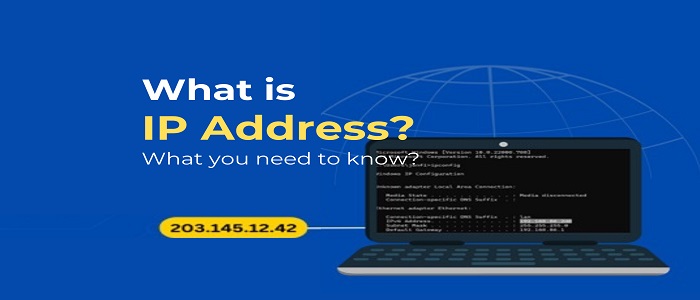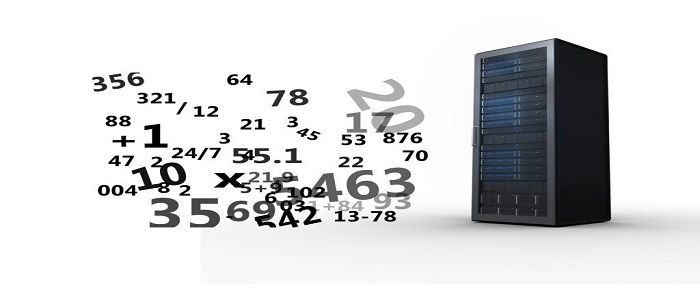
IP Address Definition and Comprehensive Explanation
In today’s interconnected environment, where the majority of things are connected to the internet, the term “IP address” often comes up. This article will offer an overview and clarification of IP addresses, including their function, variations, and operation.
An Internet Protocol address is a distinctive numerical label assigned to each device on a network that uses the Internet Protocol (IP) for communication. An IP address serves as a virtual location, identifying devices such as computers, smartphones, or servers within a network. This address consists of numbers separated by periods, for example, 192.168.0.1 or 203.145.12.42. Each IP address contains four sets of numbers, ranging from 0 to 255, representing 8 bits of data, resulting in a total of 32 bits. This is IPv4 (Internet Protocol version 4), the most prevalent version currently in use.
Clarification
The primary function of an IP address is to uniquely identify and locate network devices. When connecting to the internet or a local network, your device obtains an IP address from the router or server. This serves as a “return address,” enabling the exchange of data packets between your device and other sources. It is analogous to how a physical mailing address permits mail to be delivered to a specific location.
Two main types of IP addresses:
Public: Assigned by the Internet Service Provider (ISP) to devices with direct Internet connections, these unique IP addresses can be accessed worldwide via the Internet. Websites, servers, and other devices that require external access use public IP addresses.
Private: Allocated to devices within a local network, such as those in a residential or office setting, private IP addresses enable internal communication and are not directly accessible from the internet.
How Internet Protocol (IP) Addresses Function
When you type a URL or click a hyperlink in your web browser, your device consults a Domain Name System (DNS) server to convert the URL into an Internet Protocol(IP) address. The DNS server supplies the IP address connected to the URL, enabling your device to establish communication with the web server hosting the associated website. Once the connection is in place, data packets containing the requested webpage or supplementary information are exchanged between the web server and your device. IP addresses serve as both destination and source addresses in these packets to ensure precise transmission. This process enables the data packets to be correctly routed through the internet and delivered to the intended device.

Dynamic and Static: Dynamic IP addresses are assigned by the network’s DHCP (Dynamic Host Configuration Protocol) server and may change over time, and are commonly used by home internet users, whereas static is manually configured and do not change unless modified by the network administrator and are often used by servers, websites, and other devices that require a consistent address for accessibility.
Network Address Translation (NAT): NAT is a technique used by routers to conserve Internet Protocol addresses. It allows multiple devices within a local network to share a single public IP address provided by the ISP. When data packets are sent from a device inside the local network, before forwarding the message, the router swaps the local address with the public one. The router also maintains a record of the original address and port number to route return packets accurately.
Subnetting: A network is divided into smaller subnetworks, or subnets, and the action is referred to as subnetting. This practice improves network performance, enhances security, and simplifies network management. By using subnet masks, network administrators can allocate IP addresses to different subnets based on organizational requirements.
IPv6: IPv6, or Internet Protocol version 6, is the successor to IPv4, designed to address the issue of IPv4 address exhaustion. IPv6 uses a 128-bit address system, providing a virtually limitless number of unique Internet Protocol addresses. In contrast to IPv4’s dotted decimal notation, IPv6 addresses are represented in eight groups of four hexadecimal digits separated by colons.
Geolocation: Geolocation is the process of determining the physical location of a device based on its IP address. Geolocation can be used for various purposes, such as targeted advertising, content localization, fraud detection, and cybersecurity. However, it’s important to note that IP-based geolocation is not always accurate and can be affected by factors such as proxy servers, VPNs, and IP address assignments by ISPs.
Virtual Private Networks (VPNs): Users can establish private, secure connections using VPN services between their devices and distant VPN servers. By connecting to a VPN, a user’s actual IP address is replaced with the VPN server’s IP address. This practice enhances privacy, and security, and enables users to access geographically restricted content by selecting a VPN server in a different region or country.
Concerns Related to Security:
Internet Protocol addresses can be exposed to security risks, such as IP spoofing, in which an intruder mimics another IP address to access unauthorized information or initiate attacks. Consequently, numerous security measures, including firewalls, intrusion detection systems (IDS), and virtual private networks (VPNs) are used to protect devices and networks from risks related to IP.
Issues with Privacy:
Internet Protocol addresses can also create privacy challenges as they can be leveraged to monitor and identify an individual’s online behavior. To maintain their privacy, internet users might adopt IP masking techniques or proxy servers to obscure their IP addresses. Moreover, legal requirements like the General Data Protection Regulation (GDPR) have been introduced to control the collection and usage of IP addresses and ensure user privacy and other personal data.
In summary, IP addresses serve as essential building blocks of internet communication, uniquely identifying and locating devices within a network. As our reliance on digital connections grows, gaining insight into the multiple facets of IP addresses and their function in online activities becomes essential.
By comprehending the various kinds of Internet Protocol addresses, their objectives, and the connected security and privacy issues, users can make better-informed choices regarding their online experiences and adopt necessary measures to safeguard their information and privacy.
